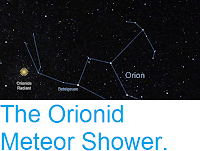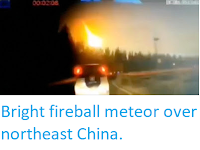The Southern Lambda Draconid Meteor Shower is visible between 1 and 4
November
each year, with peak activity due on the night of Sunday 3 November
2019, although at its peak the shower produces less that one meteor per
hour. Despite their
name, the radiant point of the Southern Lambda Draconids, i.e. the point from which the meteors appear to
radiate, is in the constellation of Ursa Major. Although this meteor shower is very hard to spot, there is a
chance of seeing it this year as peak activity occurs not long after the
New Moon on 28 October, reducing the lunar glare in the sky, and the
Moon sets at about 8.00 pm, with the best viewing of the shower being in the last hour before dawn.
The Radiant Point of the Southern Lambda Draconid Meteors. Modified from Dominic Ford/Map of the Constellations/In The Sky.
Meteor streams are thought to come from dust shed by comets as they come
close to the Sun and their icy surfaces begin to evaporate away.
Although the dust is separated from the comet, it continues to orbit the
Sun on roughly the same orbital path, creating a visible meteor shower
when the Earth crosses that path, and flecks of dust burn in the upper
atmosphere, due to friction with the atmosphere. In the case of the Southern Lambda Draconid meteors the dust
particles strike the atmosphere at speeds of about 176 400 km per hour,
burning up in the upper atmosphere and producing a light show in the
process, but the parent body has not been identified.
The Earth passing through a stream of comet dust, resulting in a meteor shower. Not to scale. Astro Bob.
The Southern Lambda Draconid Meteors were discovered by Željko Andreić of the Croatian Meteor Network, using a distributed network of small observatories run by volunteers, mostly school groups, to collect data which is then collated using the SonantaCo software package. The project has been running since 2007 and has made a number of discoveries.
See also...
Follow Sciency Thoughts on Facebook.








